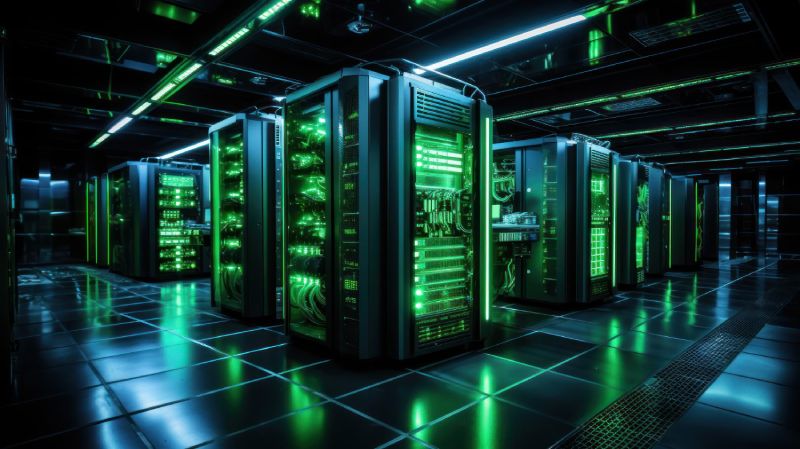The partnership between Schneider Electric and NVIDIA will optimize data center infrastructure and open the door for revolutionary developments in edge artificial intelligence (AI) and digital twin technologies. Schneider Electric is the pioneer in the digital transformation of energy management and automation.
To release the first AI data center reference designs that are accessible to the general public, Schneider Electric will combine its knowledge of data center infrastructure with NVIDIA’s cutting edge AI technologies. This design represents a major turning point in the evolution of the industry as it sets new standards for AI deployment and operation within data center ecosystems.
The need for processing power has increased tremendously as AI applications become more popular across industries and require more resources than traditional computing does. Since AI has become more prevalent, data center operators are trying to quickly build and run energy-stable, scalable, and energy-efficient facilities. This has resulted in significant changes and complexity in data center design and operation.
Executive Vice President of Schneider Electric’s Secure Power Division and Data Center Business Pankaj Sharma stated, “We’re unlocking the future of AI for organizations.” “We’re helping organizations overcome data center infrastructure limitations and realize the full potential of AI by combining our expertise in data center solutions with NVIDIA’s leadership in AI technologies.” With the help of AI, our partnership with NVIDIA opens the door to a future that is more productive, sustainable, and revolutionary.
Modern Data Center Models for Reference
Schneider Electric is partnering with NVIDIA to launch reference designs for data centers that are built for data processing, engineering simulation, electronic design automation, computer-aided drug design, and generative artificial intelligence (AI) in the first phase of the collaboration. The extreme-density cluster’s easy commissioning and dependable operations will be ensured by the controls, liquid cooling systems, and high-power distribution that will be made possible. Schneider Electric hopes to accomplish these goals by working together to give data center operators and owners the resources and tools they need to smoothly incorporate new and developing AI solutions into their infrastructure, increasing deployment efficiency and guaranteeing dependable life cycling.
Reference designs that optimize performance, scalability, and sustainability while meeting the changing needs of AI workloads will provide a solid foundation for deploying NVIDIA’s accelerated computing platform in data centers. For existing data center rooms that need to accommodate new high-density AI server deployments as well as new data center builds that are fully optimized for a liquid-cooled AI cluster, partners, engineers, and data center leaders can use these reference designs.
“We’re providing AI data center reference designs using next-generation NVIDIA accelerated computing technologies through our collaboration with Schneider Electric,” stated Ian Buck, NVIDIA’s vice president of hyperscale and HPC. “This enables businesses to harness AI’s potential and drive innovation and digital transformation across industries by giving them the infrastructure they need to do so.”
Future Roadmap
To provide a unified environment for virtual simulation and collaboration, Schneider Electric subsidiary AVEVA will link its digital twin platform to NVIDIA Omniverse in addition to the data center reference designs. Through seamless collaboration between engineers, designers, and stakeholders, this integration will speed up the design and implementation of complex systems and lower costs and time-to-market.
“The CEO of AVEVA, Caspar Herzberg, stated that NVIDIA technologies improve the company’s ability to create a realistic and immersive collaboration experience supported by the rich data and capabilities of the AVEVA intelligent digital twin.” Together, we’re building an entirely simulated industrial virtual reality in which you can model results, simulate processes, and alter reality. The integration of digital intelligence with practical results holds the capacity to revolutionize the ways in which industries can function with enhanced safety, efficiency, and sustainability.
Working with NVIDIA, Schneider Electric intends to expand on its goal of influencing positive change and the direction of technology by investigating new use cases and applications in a variety of industries.


 Business4 weeks ago
Business4 weeks ago
 Health3 weeks ago
Health3 weeks ago
 Technology3 weeks ago
Technology3 weeks ago
 Sports3 weeks ago
Sports3 weeks ago
 Science3 weeks ago
Science3 weeks ago
 Business2 weeks ago
Business2 weeks ago
 Science2 weeks ago
Science2 weeks ago
 Science1 week ago
Science1 week ago













